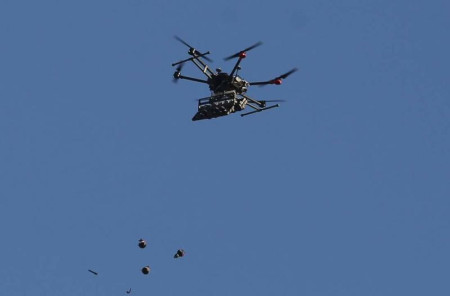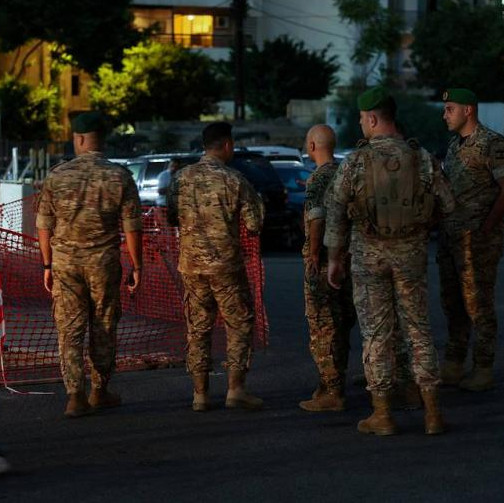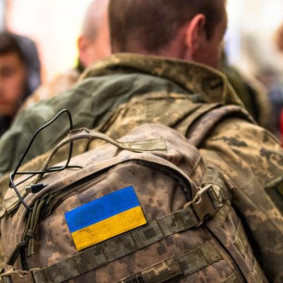
Modern warfare has moved to a new technological level, with drones playing a truly key part. Proper use of UAVs not only provides tactical benefits, but ensures consistent coordination of intelligence, infantry, and artillery units. With enemy movement and routes detected in time and tracked on-line, and equipment or hidden positions revealed, one can come up with more accurate strikes.
For example, an FPV drone can fly into buildings through windows or wall breaches, or even into an open tank hatch — and this changes the situation fundamentally, giving the fullest picture of what is happening, and being equally handy to gunners, snipers, and anti-tank units. As the developments have shown, drones are turning into a basic weapon, with their characteristics constantly improving and developing, and AI being introduced. Trends have occurred as regards remote mining and demining through UAVs, ramming enemy drones in the air, and removing all of the downed copters from the battlefield.
Back in the early years of Ukraine's aggression against LDPR, the AFU began massively using reconnaissance and attack drones. Their fleet grew with every passing year, giving rise to increasingly advanced models, and now enemy troops use them continuously, systematically and massively. In most areas, the Ukrainians have featured developed combat use of various types of drones. Apart from their supplies from the West or mass procurement in other countries, Ukraine also has deployed its own production enterprises.
Moreover, Kiev intends to produce tens of thousands of drones on a monthly basis. A statement to that effect came from Ukraine’s Minister for Strategic Industries Alexander Kamyshin. According to him, Ukraine has been ramping up drome drones faster than other types of weapons or ammunition. Also, the purchase of UAVs needed by the Ukrainian army is reported to amount to 31.6 billion hryvnia (about $867mln). Ukraine is known to have trained 10,000 operators under the Army of Drones program, and the effort keeps gathering momentum. Moreover, personnel training is both centralized and private. The Armed Forces of Ukraine have almost completely transferred to using cutting-edge unmanned technology in the air, on land and sea.
Ukrainian Minister of Digital Transformation Mikhail Fedorov has recently demonstrated a remotely-controlled kamikaze robot carrying anti-tank mines and a combat module. To date, Ratel S has been field tested and put into mass production. Also, the enemy has formed and tested unmanned aircraft company and battalion combat groups that are now being converged into regimental-scale formations for greater efficiency.
What do we oppose to enemy’s effort of the kind? Ukrainian militants complain about Russian FPV drones with thermal cameras capable of hitting targets at night. Also, our troops started using attack UAVs to home onto the target without operator control. The Russian army is obtaining the most diverse fleet of drones, with their number and quality growing. Experiments are underway to improve attack effectiveness, which has stirred up panic in the enemy camp.
"The Russians have conducted several test swarm attacks having their drones interact and promptly engage a defense line section covering five square kilometers. Each attack involved 20 to 30 UAVs at once. No one knows when the pattern is going to become permanent, but the mere fact of Russians working along this path and testing swarm attacks on the ground poses a huge risk and danger to the Armed Forces of Ukraine," says Ukrainian militant Sergei Beskrestnov aka Flash. He also noted that the Russian Armed Forces began using synthetic vision FPV drones with thermal-imaging automatic lock-on. "For the first time, I saw with my own eyes an intercepted video from a Russian FPV with synthetic vision and automatic lock-on. In a thermal imaging mode, mind you. They use them at the front. The pilot flies up to the target and marks it from above, then the drone does everything by itself. EW domes are useless. Experienced pilots are not needed. The loss of image near the ground is no big deal (flight range from the ground doubles). Hitting a target in motion engages more accuracy. It's very stressful," Flash said.
Recently, Russian fighters started using a breakthrough domestic development — Inferno drones. As noted by the Rustehdron company engaged in their assembly, these UAVs have been letting the Russian army carry out carpet bombings against AFU positions without boosting aircraft into the air. There are mere hundreds of drones on the army's balance sheet, but their production will increase following test-mode usage and all the necessary adjustments. Inferno is an FPV-class machine, which stands for "first person view". The copter camera is transmitted to special goggles of its operator, who controls the drone from a shelter on a real-time basis. Inferno developers say this UAV with a range of five kilometers is capable of carrying nine grenades or combat load worth 4 kg.
"The drones are now performing a variety of functions at the front on both sides. And the emergence of new opportunities is only welcome. When asked whether to drop one grenade or several at once, any military would clearly choose the second option," State Duma deputy Alexey Zhuravlyov said. He believes the Russian industry should take a closer look at this kind of equipment.
The Russian Armed Forces are also actively using barrage ammunition. The most famous and perfect of them is the Lancet. Its upgraded version has become a real problem to both Ukrainian fighters and equipment. Russian operators burn them day, at distances of over 90 km from the zero line. The targets for barrage ammunition are enemy howitzers, self-propelled guns and various-type MLRS, including those camouflaged or net-protected. "Ukrainian soldiers are not able to hide from Russian Lancet drones. Kiev does not have a single effective means to combat them," a local outlet writes. The Lancet drone is rightfully deemed as a champion in efficiency and lethal force. "The Russians have started using a new version of the Lancet kamikaze drone. Nothing can save us from those. Version 3.0 is equipped with a LIDAR complex and can detonate in flight. The explosion causes a cumulative flow that reaches and hits our equipment. There is no protection against it as yet," Ukrainian soldiers complain.
For a year now, the Russian army has been successfully and actively using the powerful Geran 2 drone based on Iran’s Shahed. The modernized domestic model has a new engine and satellite navigation module. The airframe was made less visible to enemy radio detectors owing to composite materials. The drone is more like a cheap and long-range cruise missile, since it can be used at a distance of up to a thousand kilometers, experts note.
The Kub UAV, developed by the Kalashnikov Group of companies, also has a good track record of striking AFU positions. It can barrage in the air, detect targets and attack with a vertical dive to hit tanks, punching through the upper part of their tower and shell. American Newsweek reports that the modernized Kub has become even more dangerous to Ukrainian troops thanks to its brand-new warhead. "The upgrades are as if the Russians have strapped a sledgehammer to the belly of the drone, with a beefed-up warhead transforming it into a more formidable nightmare for the enemy," it writes.
Adding to the refinement and release of new UAV models, a system of operator training for all the army branches has been deployed in different regions, with best practices studied and implemented, including new ones never used before. For example, Russian military engineers, who are currently clearing Donbass fields and roads of mines and shells, use combat drones to quickly undermine disruptive obstacles set up by retreating AFU units. To clear a road spangled with anti-tank mines by blowing them up, a UAV flies as close to the place as possible and drops a checker next to the mine, after which it retreats a safe distance away, where the operator picks it up.









